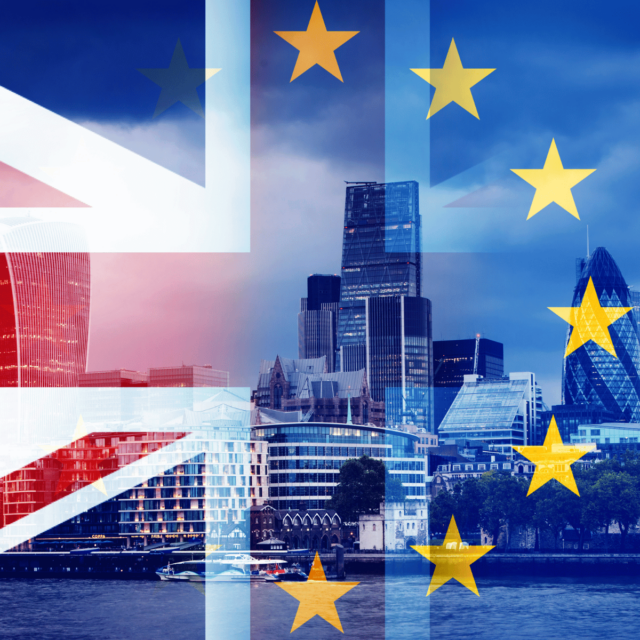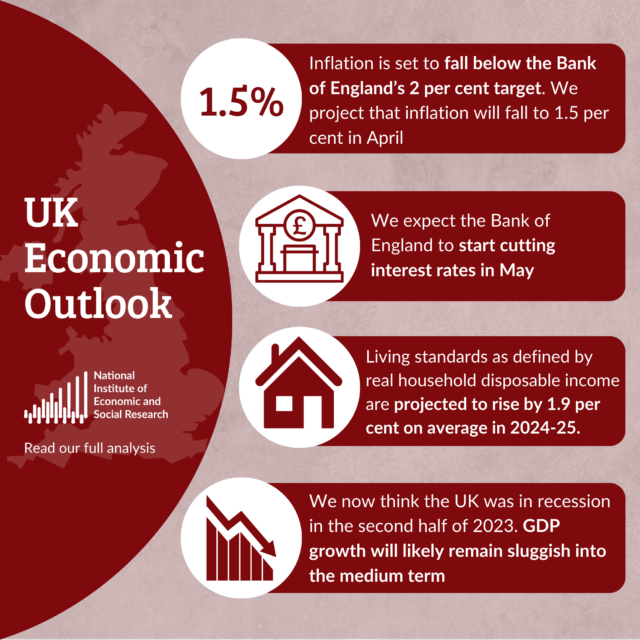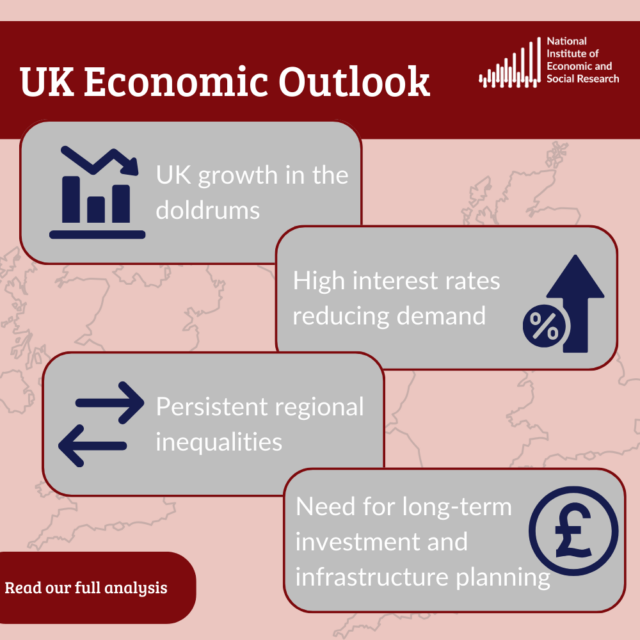International Trade
 Pub. Date
Pub. Date
 Pub. Type
Pub. Type

International Trade
The meeting discussed latest trends in international trade. The discussions were centred around the
following five questions:
1. How much has global trade slowed?
2. Is the slowdown structural?
3. What are the effects from China-US tariffs on UK?
4. What risks arise from the Johnson Brexit deal?
5. Any evidence of businesses moving abroad?
Overview
Business surveys had shown a gradual weakening in economic activity in the major economies since around the middle of 2018, and the latest readings were consistent with relatively low growth in the service sector and no growth in manufacturing. In the UK, the same pattern was evident except that the surveys were consistent with no growth in private sector services and contraction in manufacturing. The additional UK weakness was likely to be due to heightened political and economic uncertainty surrounding Brexit, which has pushed down on investment and productivity.
Weakening global economic activity seemed to have its roots in a reversal of trade liberalisation and increased protectionism, mostly notable in China-US trade. World trade growth had fallen from an annualised three-month rate of around 4 per cent in the middle of 2018 to around zero since the beginning of 2019, with a sharper slowdown in the emerging economies. This was associated with a similar decline in the growth of industrial production, from around 4 per cent in the middle of 2018
to around 1 per cent in the latest data.
The timing of the slowdown matched the pick-up in tariffs on US-China trade that had been implemented from the middle of 2018. This was associated with a sharp slowdown in bilateral China-US trade.
Other factors affecting world trade include a sea-change in the car sector that had also been affected by the ending of a purchase incentive scheme in China, technological change and new patterns of demand.
Global trade patterns
There were several observations on structural factors that pointed towards new trade patterns.
To start with, participants were keen to emphasize that there has been a shift towards digital and services trade which is not currently being reflected in the way global trade is measured. Also, on the point of measurement, there was a question about the authenticity of recording trade when firms are looking to minimise tax liabilities by channelling trade transactions through low-tax jurisdictions.
There was a discussion about the role of exchange rate depreciation in explaining the latest trends in trade. In the UK context, it was observed that the sterling effective exchange rate had depreciated by around 25 per cent since the financial crisis and that in the past this size of depreciation has tended to stimulate UK export growth, but evidence suggests that the response has been muted this time, especially on trade with the EU.
This might be because the EU markets are highly integrated markets with deep and extensive value chains and as such, exchange rate movements have less of an effect on trade volumes and more on profit margins. A much higher correlation (62%) is reported between exchange rate depreciation and trade with the US – but this is largely because there are fewer supply chains and trade with the US is smaller than with the EU.
Another key question relates to US - China trade tensions and the extent to which these tensions reflect technology-related issues. The headwinds to global trade and economic growth are likely to last for longer if the dispute includes technology as well as trade. On one view, global trade prospects are under threat because the rules-based system is being eroded by these and other disputes.
On the positive side, there is evidence that supply chains are shifting in Asia as well with Vietnam benefitting from the US – China trade and technology dispute. Further afield, the latest Pink Book showed that there was material growth in 2018 banking exports by about 5%, up to £36bn, which is a record level, perhaps related to trade finance and again, this is likely to be driven by newly emerging trading patterns.
Another participant suggested that the slowdown in the growth rate of the global trade ratio (percentage of global GDP) can be explained by faster growing economies such as China and India that are less open economies and therefore, less inclined to import. If this is the case, then the global trade-to-GDP ratio is unlikely to recover anytime soon.
Risks from the Prime Minister’s Brexit deal
NIESR analysis suggested that Brexit-related uncertainty had already reduced UK GDP by around 2½ per cent relative to what it would have been had the UK remained in the EU. NIESR analysis of the PM’s deal estimated that even if a Free Trade Agreement with the EU could be agreed by the end of 2020, UK output would eventually be 3½ per cent lower than it would otherwise have been.
Feedback from business surveys continues to show that businesses prefer a close trading relationship with the EU with the least amount of frictions, but it is also important that the government establishes and implements a plan as soon as possible because the uncertainty is proving to be costly.
Data collected on UK SMEs has shown that the proportion of SMEs exporting has fallen significantly due to Brexit uncertainty and the global economic slowdown. It was thought that the slowdown in the pace of services trade and the flatlining of goods trade is largely due to supply chains. Roughly 60 per cent of UK trade is in the supply chain sector (e.g. electronics, automotive, and aerospace) which rely heavily on European supply chains. Because the UK is part of the European, and particularly a German led supply chain, we are seeing a domestic slowdown as well. This reiterates the important role of SMEs in this process.
The question of how much of this slowdown should be attributed to Brexit and how much to the ongoing US-China trade dispute remains difficult to quantify due to data limitation. Several participants pointed out that there has been an increased link between political risk and the slowdown in trade.
Evidence of trade moving abroad
Information emanating from surveys suggest that over 70 per cent of business are unlikely to relocate because of Brexit related uncertainty – largely because overseas demand is quite low (weakest in 3 years). Businesses are more likely to shift supply chains and participate in currency hedging for now. Looking further out, when businesses were asked how likely they are to move over the next 2-3 years, the responses were more even with approximately 52 per cent saying they are unlikely to move – directly in response to Brexit.
Beyond international trade
Climate change is likely to shift trading patterns, particularly in the agriculture sector, as consumers favour locally produced goods. The transport sector and energy sectors are also likely to face major restructuring as the global economy turns towards more sustainable forms of energy. The financial sector is also turning towards more sustainable supply chains.
The meeting was chaired by Amit Kara, with Garry Young (NIESR) and Rebecca Harding (Coriolis) also leading discussions. A total of 17 organisations were represented which covers all the major survey organisations and policy making departments/institutions. The next meeting is scheduled for 13th February 2020.























